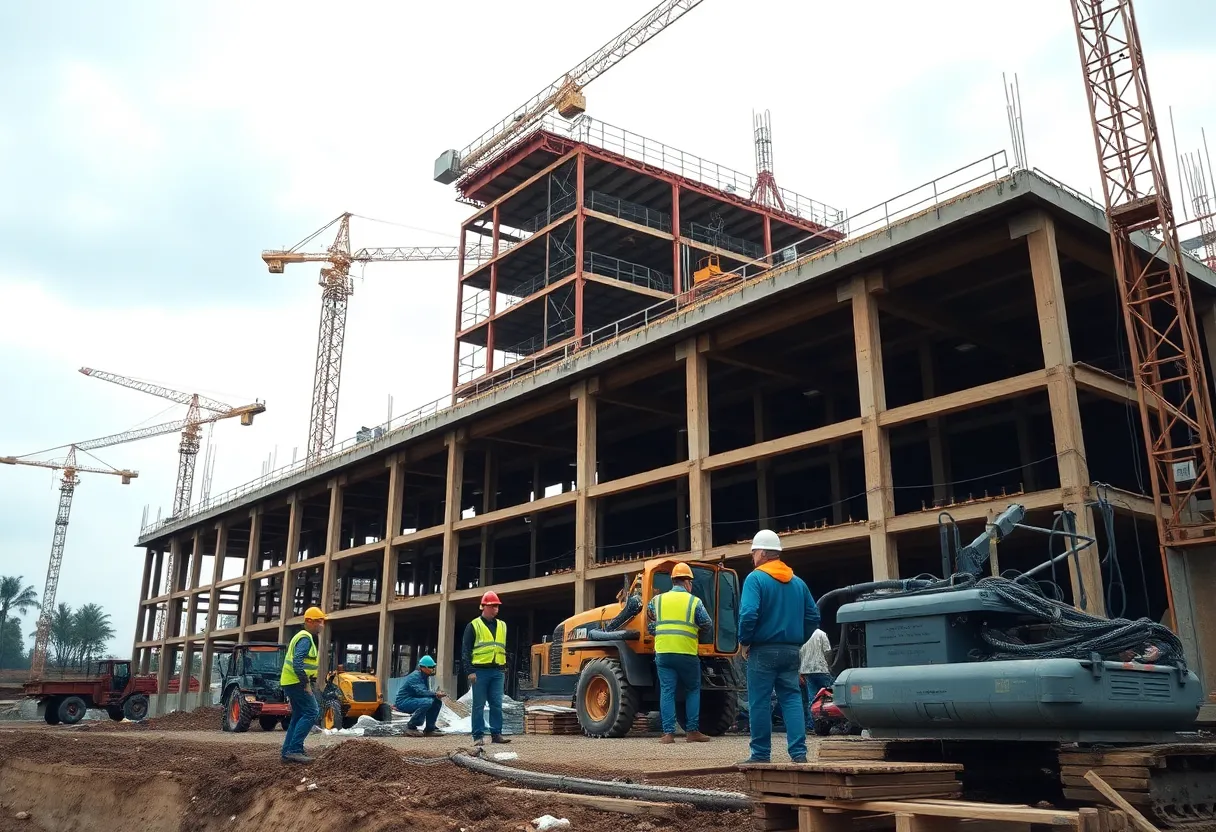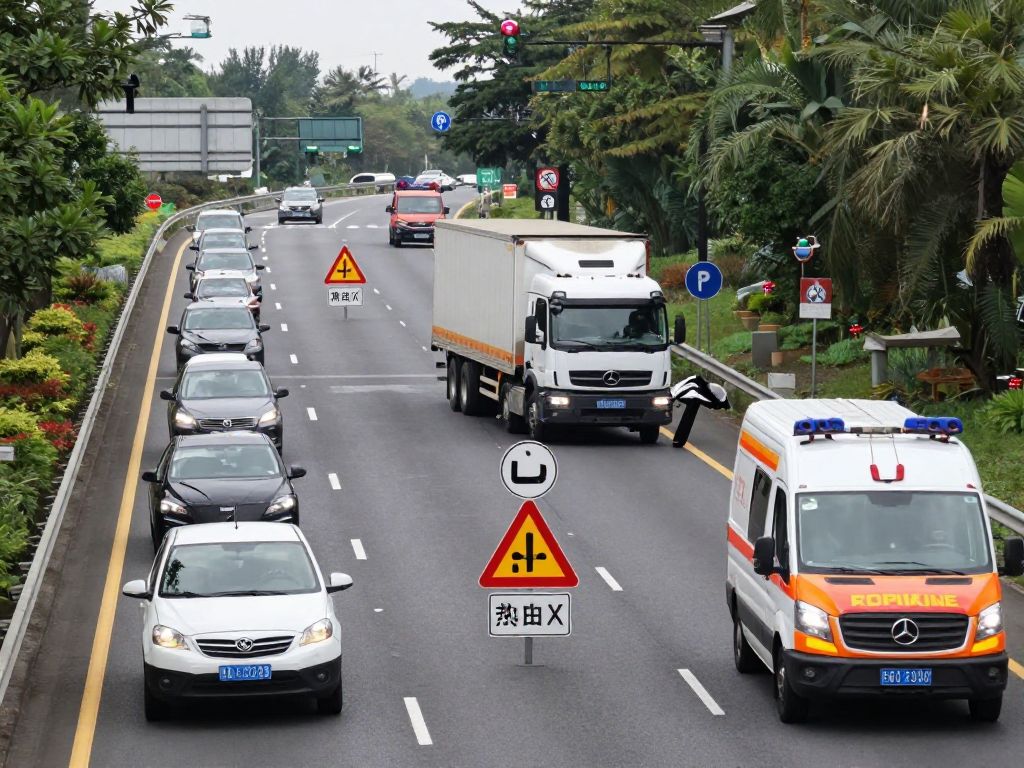Anytown, October 14, 2025
News Summary
The construction and real estate sector faces numerous economic and operational challenges, including inflation, interest rate uncertainty, labor shortages, and cybersecurity threats. Despite these pressures, niche growth areas such as data centers and energy transition projects are emerging. Firms must adapt their risk management strategies to navigate this complex landscape, including investments in technology and flexible financing options to ensure project viability amid fluctuating market conditions.
City: Anytown
The construction and real estate sector is under significant strain as it grapples with a convergence of economic and operational challenges. Key pressures, including inflation, interest rate uncertainty, fragile supply chains, increasing geopolitical tensions, and volatile commodity prices are testing the resilience and adaptability of stakeholders in these industries.
Recent findings from Aon’s Global Risk Management Survey highlight critical challenges faced by leaders within the construction and real estate sectors. Economic slowdown and liquidity concerns exacerbate cash flow risks and heighten vulnerability to cyber threats—a growing concern due to rapid digitalization across the industry.
Labor shortages further complicate the landscape, making it increasingly difficult for firms to deliver projects on time and within budget. As competition intensifies, particularly in markets experiencing robust infrastructure investments, businesses are finding themselves navigating a precarious balance of cost and efficiency to maintain their competitive edge.
Despite these challenges, opportunities for growth are emerging in niche areas such as data centers, energy transition infrastructure, and urban regeneration projects. However, the economic uncertainties have led to a paralysis in investment decision-making, resulting in numerous project postponements and cancellations as companies reassess viability amid fluctuating market conditions.
Risk Management and Cybersecurity
The interconnected risks that the construction and real estate sector face require a reevaluation of traditional risk management frameworks. Stagnated investment due to geopolitical instability and inflation indicates an urgent need for effective stress-testing of projects to assess their viability against various economic scenarios.
To mitigate risks, diversifying project portfolios and securing flexible financing options are recommended strategies to sustain momentum during downturns. However, cash flow and liquidity risks remain heightened as concerns over payment reliability and balance sheet integrity grow, leaving contractors exposed to delayed payments and potential cost overruns.
Surety bonds are emerging as a strategic tool to help preserve working capital against the backdrop of increased insolvency risks. As the industry becomes more reliant on technology, insufficient cybersecurity measures at job sites have exposed businesses to significant threats, including ransomware and supply chain attacks. There is a pressing need for industry players to invest in cyber hygiene, endpoint protection, and enhanced visibility into their supply chains to counter these threats effectively.
Commodity Price Volatility
Fluctuating commodity prices for key materials such as steel and copper add complexity to long-term project budgeting, resulting in considerable cost escalations. To manage these shifts, companies are advised to implement flexible contracts and adopt strategic purchasing strategies to lock in prices that sustain project viability amidst inflationary pressures.
Labor Market Challenges and Future Outlook
Looking ahead, the construction sector faces not only competition but also a dual workforce crisis characterized by labor shortages and a widening skills gap. A considerable segment of skilled workers is on the verge of retirement, creating an experiential void coupled with rising digital demands. The industry must reposition itself as an appealing career choice while investing in employee development and advancement programs to attract and retain talent.
Investment in technology is becoming paramount for differentiation, as firms increasingly prioritize enhancements in digital tools such as building information modeling and artificial intelligence to streamline operations. Risk management strategies need to evolve, focusing more on proactive decision-making that encompasses both human capital and operational risks. A corporate culture that enhances employee engagement and satisfaction will also play a pivotal role in mitigating organizational risk exposure and bolstering performance going forward.
Chart: Key Challenges in the Construction and Real Estate Sector
| Challenges | Impact |
|---|---|
| Inflation | Cost escalations and budget management issues |
| Interest Rate Uncertainty | Investment paralysis and project delays |
| Supply Chain Vulnerabilities | Delayed project delivery |
| Labor Shortages | Increased difficulty in completing projects on time |
| Cybersecurity Threats | Potential financial losses and data breaches |
| Commodity Price Volatility | Budget unpredictability and project feasibility issues |
FAQ Section
What challenges are the construction and real estate sectors facing currently?
These sectors face inflation, interest rate uncertainty, fragile supply chains, labor shortages, cyber threats, and a volatile commodity market.
What areas are showing growth opportunities despite the challenges?
Opportunities for growth exist in data centers, energy transition infrastructure, and urban regeneration projects.
How are cybersecurity threats impacting the construction sector?
Insufficient protective measures make construction sites vulnerable to ransomware attacks and breaches, underscoring the need for enhanced cyber hygiene.
What strategies can firms employ to manage cash flow risks?
Firms are encouraged to diversify project portfolios, adopt flexible financing options, and utilize surety bonds to manage liquidity concerns.
What role does technology play in the construction industry’s future?
Investing in advanced digital tools is essential for differentiation and improving operational efficiency amid rising competition.
Deeper Dive: News & Info About This Topic
HERE Resources
Bus Driver Shortage Disrupts School Operations in Ohio and Michigan
Partial Blockage on Interstate 10 in Phoenix Following Rollover Crash
Trammell Crow Company Breaks Ground on West 101 Logistics Center
Phoenix Police Fatally Shoot Man During Domestic Dispute
Local Construction Firm in Kannapolis Plans Expansion
Construction Disrupts Local Businesses in Merced
Hudson School Board Considers Closure of Elementary Schools
Community Voices Concerns Over School Closures in Evanston
Grapevine ISD Considers Closing Elementary Schools Amid Enrollment Decline
Former Superintendent Indicted on Multiple Federal Charges
Additional Resources
- Aon: How Human Capital Data Enhances Risk Management
- Investopedia: Human Capital
- Risk & Insurance: Human Capital Investment
- PR Newswire: Aon Appoints Andy Marcell as CEO
- J.P. Morgan: Importance of Human Capital Management
- Wikipedia: Human Capital
- Google Search: Construction Risk Management
- Google Scholar: Human Capital in Construction
- Encyclopedia Britannica: Risk Management
- Google News: Cybersecurity in Construction
Author: STAFF HERE PHOENIX WRITER
The PHOENIX STAFF WRITER represents the experienced team at HEREPhoenix.com, your go-to source for actionable local news and information in Phoenix, Maricopa County, and beyond. Specializing in "news you can use," we cover essential topics like product reviews for personal and business needs, local business directories, politics, real estate trends, neighborhood insights, and state news affecting the area—with deep expertise drawn from years of dedicated reporting and strong community input, including local press releases and business updates. We deliver top reporting on high-value events such as the Waste Management Phoenix Open, Cactus League Spring Training, and Arizona State Fair. Our coverage extends to key organizations like the Greater Phoenix Chamber of Commerce and Visit Phoenix, plus leading businesses in technology and healthcare that power the local economy such as Intel and Banner Health. As part of the broader HERE network, including HERETucson.com, we provide comprehensive, credible insights into Arizona's dynamic landscape.





